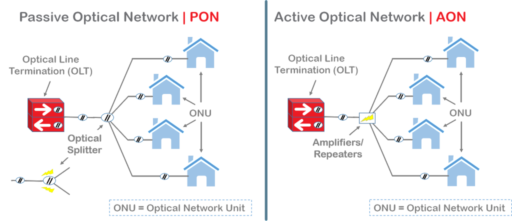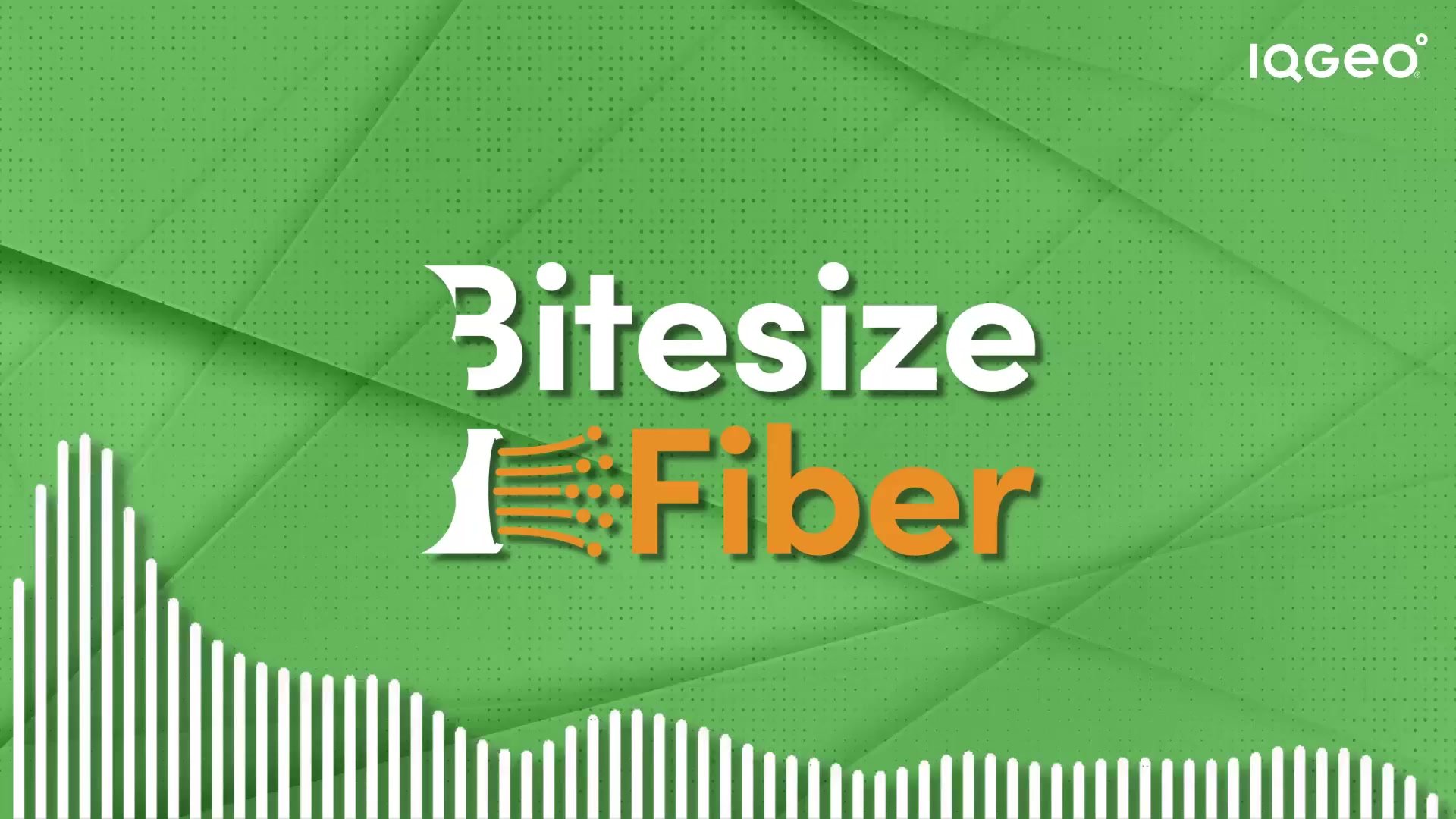According to the latest figures from Point Topic, global fixed access broadband subscribers reached 1.3 billion at the end of Q1 2022, up by 1.7% from the previous quarter. Additionally, for the first time, Fiber to the Home (FTTH) connections were more than half of all fixed broadband connections.
In the following blog, we look at the main components and general architecture of the FTTH network.
How does an FTTH network work?
FTTH enhances internet speed significantly and to understand how FTTH works, its critical to understand how an optical fiber cable works. At its core, an OFC (optical fiber cable) carries signals of light to transmit data across the length of the network. Because optical signals are faster and not affected by noise, an FTTH network can deliver endless Fibernet internet over large distances. Therefore, it has abundant bandwidth to carry information and is immune to interference (EMI or RMI), crosstalk, and noise.
Optical fiber transmits information from various servers, thus ensuring higher connectivity and a better user experience. Specialists at the FTTH Council Europe report that FTTH connections are the only technology with enough bandwidth to manage projected consumer demands reliably and cost effectively.
FTTH broadband connections are uniquely structured and include fiber optic cables running from a central office through FDH or through a fiber disruption via an access point. Lastly, it ends going through a user’s residency via a terminal serving as a junction box [1]. Examples of services which can be offered via the FTTH network include:
- VoIP
- RF video
- MPG video
- IPTV
- HDTV
- Video-on-demand
- Pay-per-view
- High-speed internet
Active and passive optical networks
FTTH technology depends on both active and passive optical networks to function. As data moves into the form of light, it needs to have the correct destination [2]. Both active and passive networks have their own respective data separation and routing mechanism. Furthermore, both methods have their own advantages and disadvantages.

What do the main components and general architecture of FTTH look like? Let us take a closer look.
What are the FTTH components and general architecture made up of?
1. Optical Line Terminal (OLT): The OLT is the central office and aggregation equipment for GPON technologies [3]. GPON is a telecommunications access technology which uses fiber optic cabling to reach the user and separates data, voice, and video into three different network layers.
The primary function and features of the OLT are:
- Converting optical signals into electrical signals
- Interfaces with the ONU (optical network unit)/ONT (optical network terminal) in the downstream direction of the PON (passive optical network)
- Manages security and authentication policies
2. Optical Distribution Frame (ODF): The ODF is the frame where fiber from outdoor cables is terminated and become available to interface with any active equipment or patching. In addition, the ODF offers flexible patching between active equipment points or splitters along with the outdoor cable termination. Fibers are found and stored in physically separated housings or shelves to simplify their maintenance.
3. Optical Splitter Frame (OSF): An OSF is a modular encapsulation of optical splitters in a rack mountable unit [4]. It includes a patch panel for input and output adapters.
4. Passive Optical Splitter (POS): Here, the fiber and its signal is split by the optical splitter. The POS performs a 1: N function where N represents a splitting ratio from 2 to 64.
In FTTH architecture, optical splitters may be placed in the following locations:
- Central office – besides the OLT (housed in the ODF rack)
- Fiber Distribution Terminal (FDT) – The terminal connecting the feeder cables and distribution cables
- Fiber Access Terminals (FAT) – An FAT enables the distribution of fibers and provides several types of connections
- Optical Splice Box (OSB) – The optical splitter is connected to the fiber in the box
What are the advantages for FTTH broadband?
High-speed – Firstly, because of the core fiber optic technology, FTTH dramatically increases connection speeds with nearly unlimited bandwidth capacity. Customers are hardwired to want instant, real-time communication and FTTH has become the backbone for both personal and business use. With cable and telecom industries making massive capital investments in ultra-fast network rollouts, there is no doubt that a powerful, superfast FTTH broadband is the need of the hour.
Accessibility – Next, compared to traditional options – twisted pair conductors, coaxial cables, or DSL broadband, FTTH enables a much higher bandwidth. This results in an exponential improvement in network performance over long distances and in rural areas.
Future-proof – Lastly, one of the advantages of FTTH is that it is future proof. By enabling fiber optic network providers to upgrade network performance without replacing the fiber, it represents a huge cost savings and time with potential replacements and installations. In addition, one can upgrade the FTTH infrastructure without touching the cables. This validates FTTH architecture and makes it future proof for innovative technologies.
FTTH planning and design software
The current mass rollouts of fiber bring many challenges for all contributing parties, and the time between engineering a network, building the network and updating the network inventory can easily take months. Each day the inventory is not up-to-date, results in delays for both greenfield and brownfield implementations. With an accurate inventory system, users can decrease the risks of cable-cuts, provide critical information to the sales department, and decrease any internal frustrations and invisible costs. IQGeo's fiber network management software supports the entire lifecycle, dramatically reducing the time between building the network and updating the asset inventory thus improving your time-to-market, optimizing your cost, and improving the end-to-end process.
When rolling out fiber for millions of subscribers, speed and cost-savings have a significant impact on the business case. IQGeo's Comsof Fiber software supports operators and engineering firms with a faster and cost-efficient planning and design process. When networks are designed well and appropriately documented, field teams can identify vulnerabilities in advance and address issues effectively as they arise. Still, your system tool’s must support the complete process, which means it provides value long after the construction of a network.
Expanding the reach of FTTH to more households
As we have seen, FTTH is the future. It is widely acknowledged that FTTH is the only future-proof technology when it comes to bandwidth capacity, speed, reliability, and security. Thus, it represents a technological leap over traditional deployments thanks to its use of near-zero interference fiber optic technology. As demand for broadband capacity continues to rise, it is likely governments and developers will further push FTTH broadband connections to more households.
IQGeo has a long history of helping fiber and telecom operators accelerate time to revenue, book a demo with our industry experts to take your fiber planning and network management to a new level of efficiency that enables you to rapidly deploy and manage your fiber networks.
References:
[1] https://telecomtalk.info/how-does-ftth-broadband-work-advantages-speed/469891/
[2] https://itechiteasy.com/ftth-technology/
[3] https://www.technopediasite.com/2018/12/ftth-components-and-general-architecture.html
[4] https://www.telhua.com/optical-splitter-frame-osf-and-accessories-for-stc-ts-3307/
Similar articles:


 Previous
Previous







